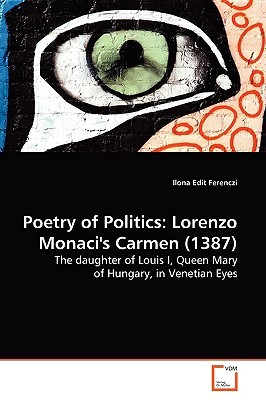
- We will send in 10–14 business days.
- Author: Ilona Edit Ferenczi
- Publisher: VDM Verlag
- ISBN-10: 3639137302
- ISBN-13: 9783639137309
- Format: 15.2 x 22.9 x 0.4 cm, softcover
- Language: English
- SAVE -10% with code: EXTRA
Reviews
Description
Carmen seu historia Carolo II cognomento Parvo Rege Hungariae is a medieval account on the political troubles under the reign of Queen Mary (1382-1395), the only queen who ever ruled Hungary in the Middle Ages. It is a 560-line Latin hexametric epic, written in 1388 by the Venetian poet, notary and chronicler, Lorenzo Monaci, who fulfilled diplomatic missions in Hungary on multiple occasions. Both the poem and the dedicatory letter prefacing it have been extensively used by scholars as historical sources; no one, however, has ever analyzed it as a literary product. This thesis deals with Monaci' Carmen as a literary construct. As such, the image it conveys about Queen Mary, as well as about late fourteenth-century Hungarian events, have been contextualized and carefully deconstructed. The book explores three different contexts: Monaci's Venetian bias; Hungarian-Venetian diplomatic and political relations; and the problems of female rule in Angevin Hungary. The analysis deconstructs the contrastive images of Queen Mary and her rival, Charles of Durazzo in the Carmen, an outstanding Gesamtkunstwerk of medieval historical literature.
EXTRA 10 % discount with code: EXTRA
The promotion ends in 16d.19:23:30
The discount code is valid when purchasing from 10 €. Discounts do not stack.
- Author: Ilona Edit Ferenczi
- Publisher: VDM Verlag
- ISBN-10: 3639137302
- ISBN-13: 9783639137309
- Format: 15.2 x 22.9 x 0.4 cm, softcover
- Language: English English
Carmen seu historia Carolo II cognomento Parvo Rege Hungariae is a medieval account on the political troubles under the reign of Queen Mary (1382-1395), the only queen who ever ruled Hungary in the Middle Ages. It is a 560-line Latin hexametric epic, written in 1388 by the Venetian poet, notary and chronicler, Lorenzo Monaci, who fulfilled diplomatic missions in Hungary on multiple occasions. Both the poem and the dedicatory letter prefacing it have been extensively used by scholars as historical sources; no one, however, has ever analyzed it as a literary product. This thesis deals with Monaci' Carmen as a literary construct. As such, the image it conveys about Queen Mary, as well as about late fourteenth-century Hungarian events, have been contextualized and carefully deconstructed. The book explores three different contexts: Monaci's Venetian bias; Hungarian-Venetian diplomatic and political relations; and the problems of female rule in Angevin Hungary. The analysis deconstructs the contrastive images of Queen Mary and her rival, Charles of Durazzo in the Carmen, an outstanding Gesamtkunstwerk of medieval historical literature.


Reviews